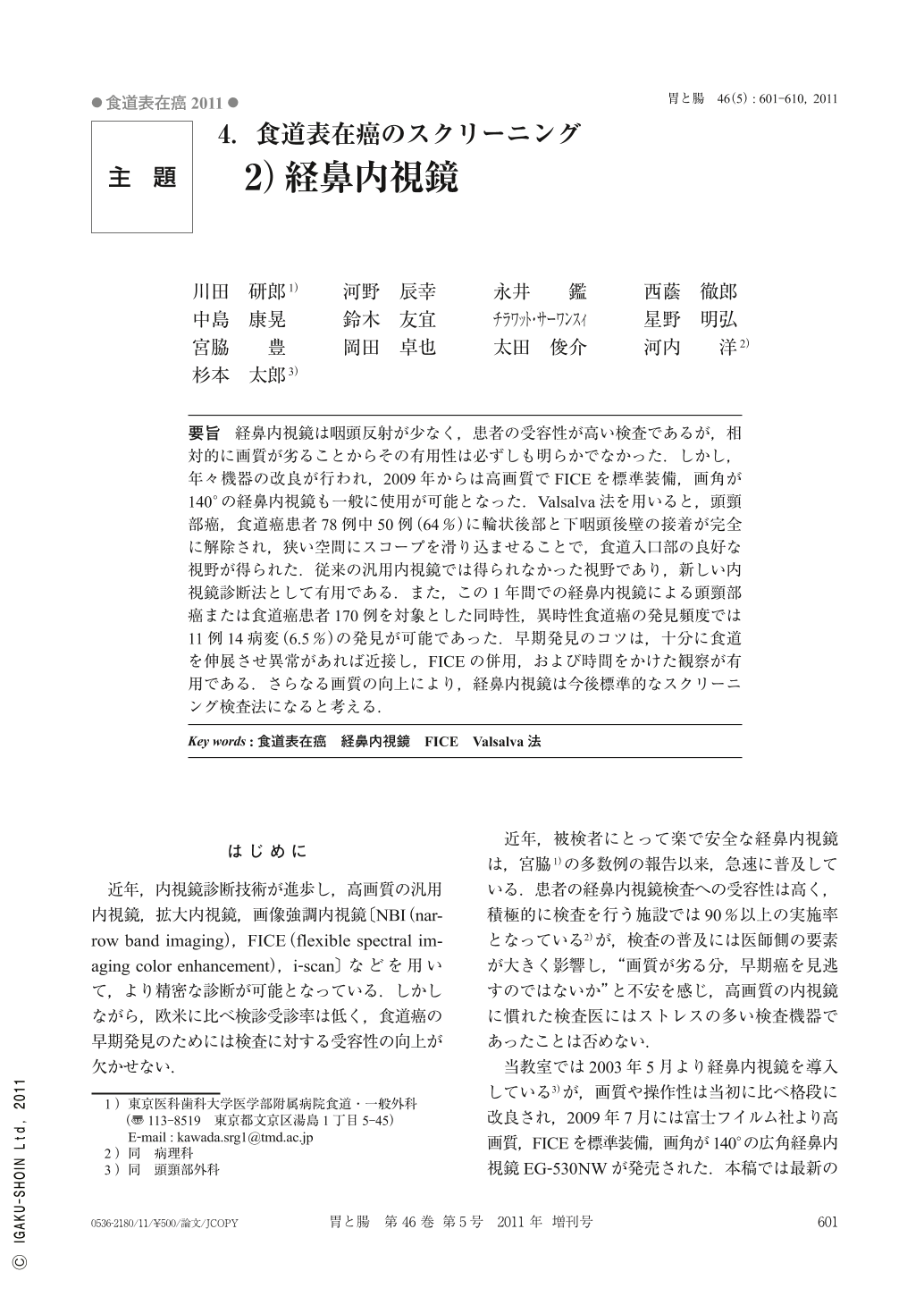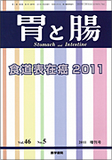Japanese
English
- 有料閲覧
- Abstract 文献概要
- 1ページ目 Look Inside
- 参考文献 Reference
- サイト内被引用 Cited by
要旨 経鼻内視鏡は咽頭反射が少なく,患者の受容性が高い検査であるが,相対的に画質が劣ることからその有用性は必ずしも明らかでなかった.しかし,年々機器の改良が行われ,2009年からは高画質でFICEを標準装備,画角が140°の経鼻内視鏡も一般に使用が可能となった.Valsalva法を用いると,頭頸部癌,食道癌患者78例中50例(64%)に輪状後部と下咽頭後壁の接着が完全に解除され,狭い空間にスコープを滑り込ませることで,食道入口部の良好な視野が得られた.従来の汎用内視鏡では得られなかった視野であり,新しい内視鏡診断法として有用である.また,この1年間での経鼻内視鏡による頭頸部癌または食道癌患者170例を対象とした同時性,異時性食道癌の発見頻度では11例14病変(6.5%)の発見が可能であった.早期発見のコツは,十分に食道を伸展させ異常があれば近接し,FICEの併用,および時間をかけた観察が有用である.さらなる画質の向上により,経鼻内視鏡は今後標準的なスクリーニング検査法になると考える.
Transnasal EGD(esophagogastroduodenoscopy)can be performed comfortably because of its attenuation of the gag reflex. However, it has some disadvantages compared with conventional endoscopy such as brightness, image solution, and suction ability, so its diagnostic abilities have not been sufficiently evaluated. The procedure has been making tremendous progress, and a new endoscope(model EG-530NW, FUJI film, Tokyo, Japan)has been manufactured beginning in July, 2009. The endoscope is a transnasal endoscope that provides high quality endoscopic images with a wide field view of 140°with the FICE system. The postcricoid subsite of the hypopharynx and UOS(upper oesophageal sphincter)is difficult to visualize on conventional EGD, but the Valsalva maneuver with flexible otorhinolaryngoscopy has been shown to improve their visualization. The use of the Valsalva maneuver with transnasal EGD results in postcricoid and UOS visualization in 64%(50/78)of cases. The new transnasal EGD(EG-530NW)also improves the visualization of the hypopharynx and UOS, which is not possible using conventional EGD. We report here the results of our investigation of the diagnostic accuracy of synchronous or metachronous esophageal cancers in 170 patients with esophageal cancer or head and neck cancer. A total of 14 superficial esophageal cancers were found in 11 patients(6.5%)by transnasal EGD. All of these were detected without submucosal invasion. The technique used for observing the esophagus with a good field of vision is able to expand the esophagus, and if abnormal findings are observed, then it is better to approach and carefully reach the lesion, and then effectively use the FICE system. Transnasal EGD may therefore become the standard examination modality for screening the upper gastrointestinal tract in the future.

Copyright © 2011, Igaku-Shoin Ltd. All rights reserved.


